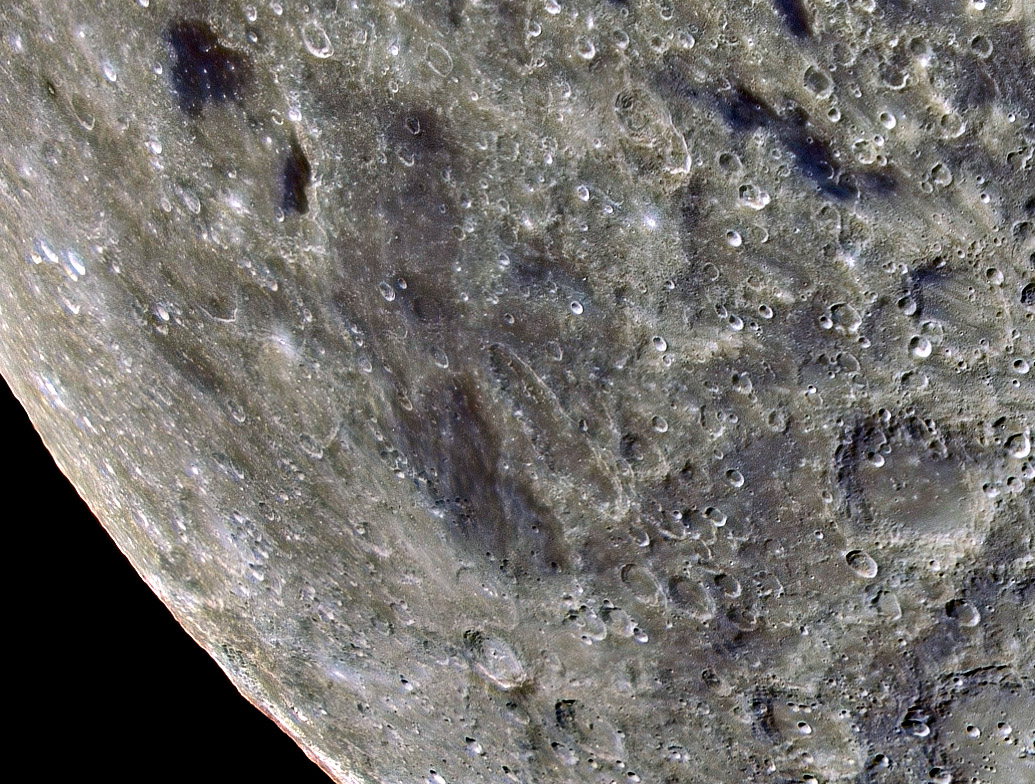October 1, 2009
Chasing Cryptomaria

LRGB image by Dmitry Makolkin, Moscow, Russia
All of the recent spacecraft that orbited the Moon carried multispectral cameras that captured images through a variety of filters. The purpose was to detect and map areas with subtle differences in color which represent differences in surface composition. Dmitry has achieved a similar goal with his excellent composite image made by blending a high resolution luminence image with an RGB one. His original full Moon mosaic is a masterpiece that repays careful study from top to bottom. Here is a section of it that I have cropped and aggressively enhanced (with unsharp masking) to maximize the detection of buried mare lavas, or cryptomare. The nearly black ends of Schickard (upper left) and Lacus Timoris (upper right) show what little-contaminated mare basalts look like in enhanced RGB colors. But mare covered by ejecta from impact craters becomes lighter and as the ejecta layer thickens the darkness gradually becomes totally hidden. Dark halo craters penetrate the bright zebra stripe in Schickard showing that dark mare material underlies the bright material - ejecta from Orientale. In places where the ejecta verneer is thin Dmitry's RGB image reveals partially buried maria, most visibly in the center middle of the image. This mass of cryptomaria occupies the center of the Schiller-Zucchius Basin, and extends northward to the east of Schickard. A crater on the southern rim of Zucchius (bottom center) has ejected dark rays, showing that mare material underlays this area too. Further north, part of Wargentin's lava-filled floor (proven by dark halo craters and the bird's foot mare ridge system) is visible, as is a broad area southwest of Wargentin. A final area of buried maria is indicated by the small dark halo crater at the top left of the image. And of course, more deeply covered maria could be undectably anywhere.
Chuck Wood
Technical Details
9 September 2009, ~03:30 MSK (GMT +4h). TAL-250K 250mm F=2130mm.
L channel: camera DMK 31, filter - Astronomics IR Pro 742, 36 AVI, 2500 frames each, stacked 350 best frames in Registax 5 and Avistack. Then panorama was created, deconvolution and tonal correction were applied.
RGB was taken with the same scope and 0.7x compressor, so the whole Moon was on the frame of Canon 350D. 128 of 160 CR2 images were stacked in Registax 5.
Final image was assembled from IR image as L channel, color information was taken from RGB image. To match the scale of L channel, RGB image was resampled to 2x bigger scale.
Related Links
Rükl plate 52
Yesterday's LPOD: A Wetter Hole?
Tomorrow's LPOD: Cleo 2
COMMENTS?
Register, Log in, and join in the comments.



